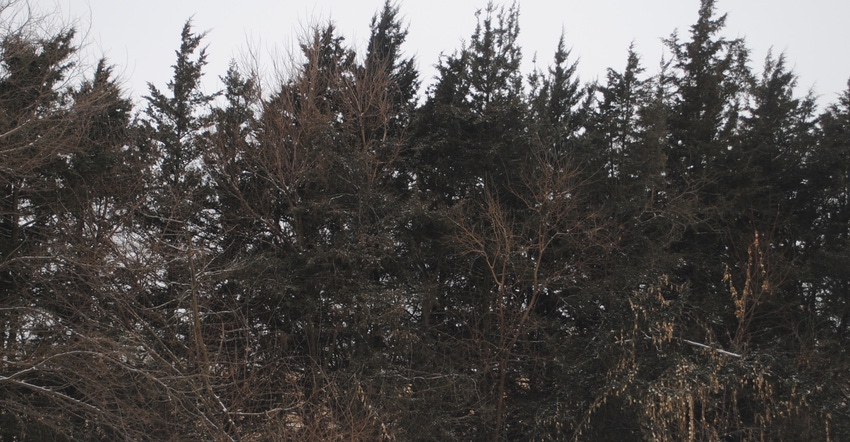
The prairie winds like to blow. That’s why a large part of forest resources in the Midwest, Great Plains and Western states is comprised of shelterbelts.
Thanks to the federal Prairie State Forestry Project that was passed in 1934, more than 220 million trees were planted by 1942, stretching out more than 18,600 miles across 30,000 farms. This program, and subsequent tree planting projects since, have helped farmers and ranchers plant protective shelterbelts across the country.
But planting the trees is only the beginning. Over time, weather events, age and invasive species take their toll and reduce the effectiveness of older shelterbelts, some of which are between 80 and 100 years old. So, if you want to maintain the efficiency of an older shelterbelt, you need to assess windbreak health from time to time.
“Windbreaks are more than the sum of their parts, but the condition of their parts can help determine when management, including renovation, is necessary,” says Derek Lowstuter, forest stewardship manager, North Dakota Forest Service. “Windbreaks are generally considered in poor condition if more than 25% of the trees or shrubs have died, or alternatively, if there are gaps in roughly 25% of the windbreak profile.”
That’s when renovation work is needed.
“Renovation can mean the complete removal of windbreaks and starting from scratch, encouraging natural seedling regeneration, cutting down suckering shrubs to rejuvenate them, interplanting new trees in rows, adding new tree rows, eliminating sod-forming grasses and many other activities,” Lowstuter says. “Renovation does not just mean cutting down and starting over.”
Disease and insect pressure also matter.
“Even if a windbreak does not have large gaps in the rows, renovation may be beneficial if large numbers of trees are being stressed or damaged,” Lowstuter says. “For example, a row of green ash in a windbreak may not have any gaps, but the trees could be heavily infected with stem decay fungi, which will increase the likelihood of storm damage and secondary stressors.”
Renovations can come in different forms.
“Individual tree rows can be completely removed and replaced within existing rows if there is enough room,” Lowstuter says. “The simplest and usually most cost-effective renovation technique is to leave the existing windbreak trees alone and plant new rows nearby.”
New trees can benefit from protection of the existing trees, making it easier to maintain young trees rather than trying to maintain mature trees that were not properly managed in the first place.
While Lowstuter encourages planting diverse tree species to avoid future disease and pest problems, the options for windbreak renovation work depend a lot on how the windbreak is designed. He suggests thinking about balance of growth and lifespan when planting in a renovated windbreak.
“Ask yourself if the trees may need to be pruned in 10 years,” he says. “What trees, like hybrid poplar, may only last 20 years and will need to be removed?”
He suggests thinking about if the rows are planted wide enough to allow removals without crushing half of the windbreak.
Learn more by contacting Lowstuter at [email protected].
About the Author(s)
You May Also Like






